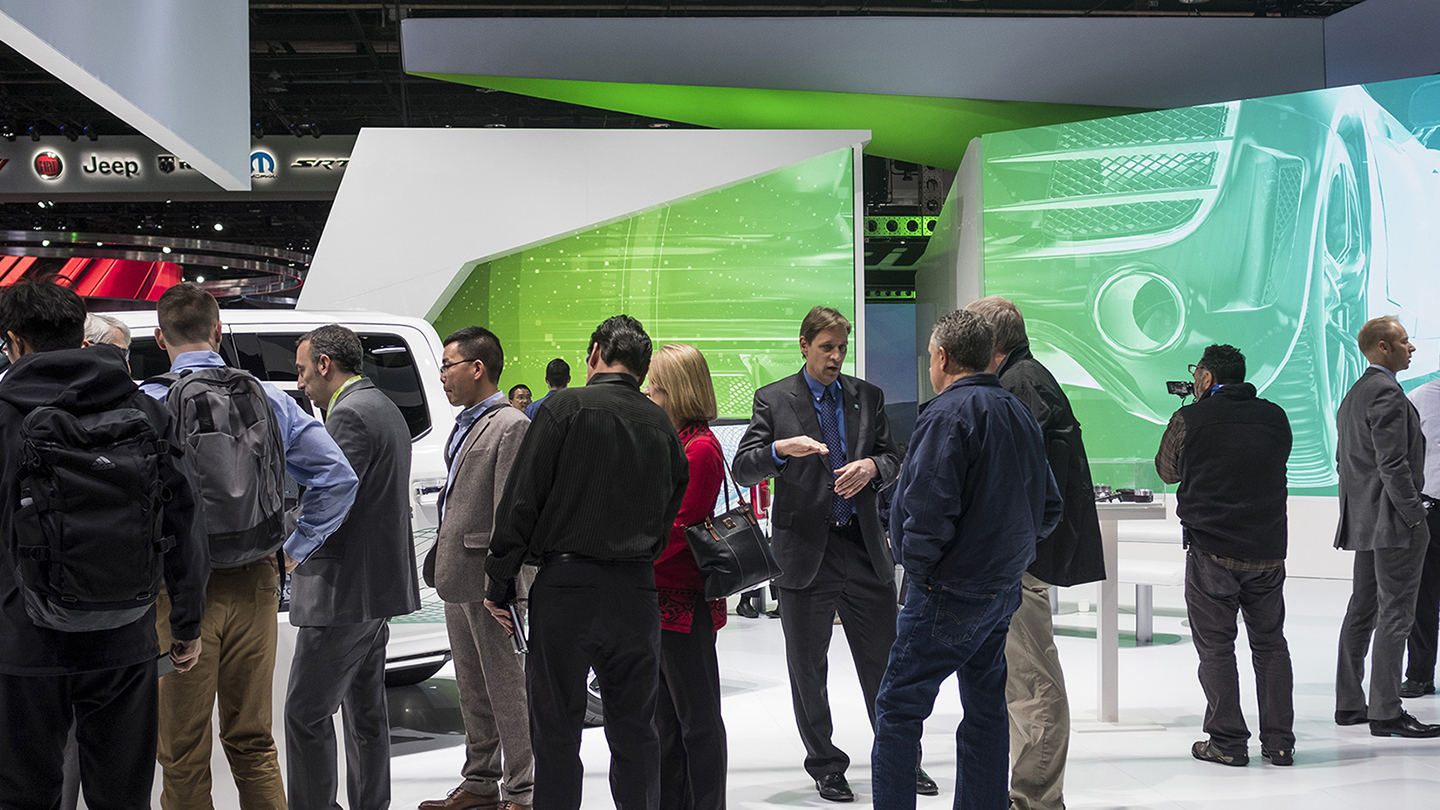Aramco impresses in Detroit Auto Show debut

The internal combustion engine is here to stay, so efforts to cut global emissions must focus on increasing the fuel efficiency.
The internal combustion engine is here to stay, so efforts to cut global emissions must focus on increasing the fuel efficiency.
That was one of the central messages delivered by the team from Aramco's Detroit Research Center exhibiting at the city's annual North American International Auto Show earlier this month. Saudi Aramco was a premier sponsor of the event, which attracted more than 5,000 media attendees, 40,000 industry professionals, and 700,000 consumers.
Engine efficiency and new technology
The Saudi Aramco team, led by chief technology officer Ahmad O. Al-Khowaiter, emphasized how internal combustion engines have harnessed unparalleled energy density of hydrocarbons, transforming the world and powering economies to ever greater heights. And with hydrocarbons (whether fossil or renewable based) meeting 99% of the world's transport needs, Saudi Aramco outlined the importance of the company's work on greater engine efficiency and new technical advances enabling the onboard capture and storage of carbon.
“Being at the Detroit auto show is an opportunity to share the significant advances our researchers are making in vehicle technologies that reduce emissions, improve fuel efficiency, and increase engine performance,” said Al-Khowaiter. “As a leading energy company, we have a role to play in bringing our expertise to the table and supporting automakers in responding to worldwide calls for reductions in greenhouse gases and pollutants that impact the environment.”
Showcasing our work
Aramco's activities were highlighted at the company's exhibit on the main show floor adjacent to Kia and Chrysler/Fiat/Dodge/Jeep/Ram, as well as a booth in the innovation-oriented Automobili-D exhibit space.
Pre-event tours of the company's Detroit Research Center attracted eight major global automakers who were given an overview of Aramco's technology and lab capabilities. There was also a separate tour organized for top-tier media outlets.
Other Aramco centers involved in transport technology that were highlighted during the show include the Research and Development Center (R&DC) in Dhahran; the Clean Combustion Research Center at the King Abdullah University of Science and Technology through the FUELCOM collaboration; the Aramco Fuel Research Center-Paris; and the Beijing Research Center.
“Our work in transport technologies is global in scale with teams, facilities, and partners around the world working together within regional infrastructures to find new approaches to the challenges that are common to us all,” said Ammar A. Al-Nahwi, head of R&DC.
Technology for the full range of emissions challenges
Aramco's flagship technology focus — gasoline compression ignition (GCI) — was a special feature at the show. As part of their work to build the most advanced GCI engines anywhere, Aramco researchers are leveraging the physical and chemical properties of gasoline and gasoline-like fuels along with innovative combustion approaches to substantially lower emissions.
In Detroit, a Ford F-150 displayed at the Aramco booth showed a collaboration with Achates Power on an opposed-piston GCI engine concept — reinforcing the viability of the technology and its efficiency at an estimated 37 miles per gallon.
Also in the spotlight was Aramco's mobile carbon capture program. In this research area, a novel exhaust system captures and stores the carbon dioxide (CO2) onboard the vehicle for later offloading and use in industrial and commercial activities. A particular area of interest for Aramco is heavy-duty trucks, which represent some of the heaviest polluters in the transport sector. At the show, Aramco reaffirmed our goal to further advance mobile carbon capture to demonstrate a 50% reduction in CO2 emissions by year-end.
Octane-on-demand, another highlighted Aramco technology, drew attention at the show for the power and performance it can offer through a two-fuel system — a high-octane fuel for conditions that require it and low-octane for normal driving conditions.
“We are looking at transport challenges from a wide variety of perspectives and technology solutions — from the fuels we refine and the engines that consume our fuels, all the way through to tailpipe emissions and beyond,” said Amer A. Amer, chief fuels technologist at R&DC.
Sustainability a key focus
The North American International Auto Show — one of the largest auto shows in the world — was also an important venue for discussions surrounding the many technology advances taking place in the automotive industry.
“As a top global refiner, Aramco brings a unique view to optimizing fuels with engines, including the internal combustion engine, which currently makes up 99% of all power sources for vehicles,” said Al-Khowaiter. “In the short- to mid-term, this is where we as a company can make a significant impact as part of our commitment to sustainable mobility.”
The world's automotive capital
Detroit is home to all major U.S. automakers, as well as the R&D centers of most automakers worldwide, engine makers, and technology providers.
“Our presence at the Detroit auto show was notable and sent a strong signal to the industry that we are here to collaborate and make a meaningful difference in fuels and engine technology,” said David Cleary, director of Aramco's Detroit Research Center.



